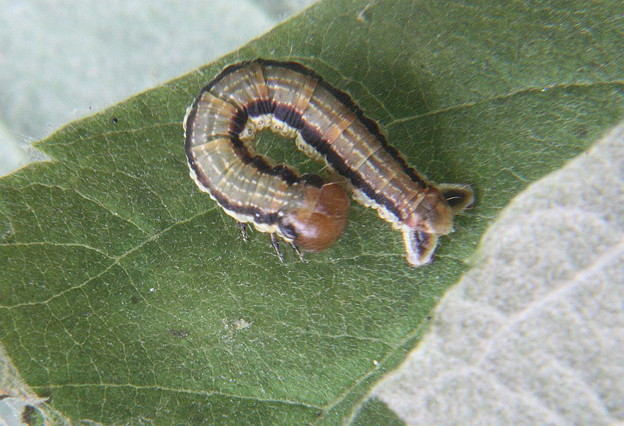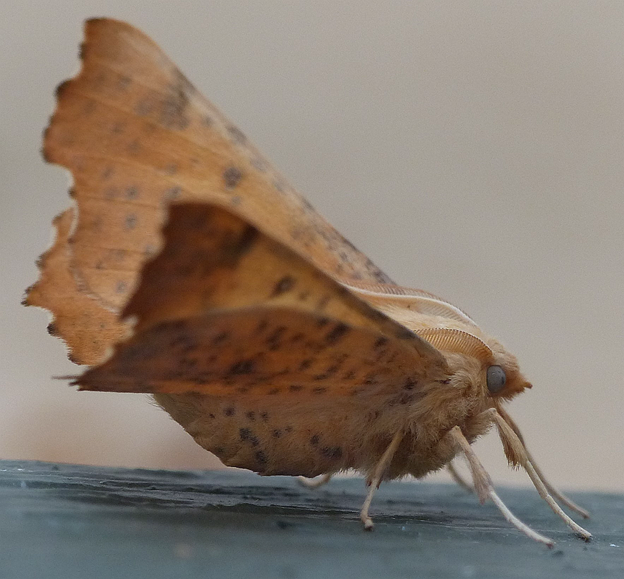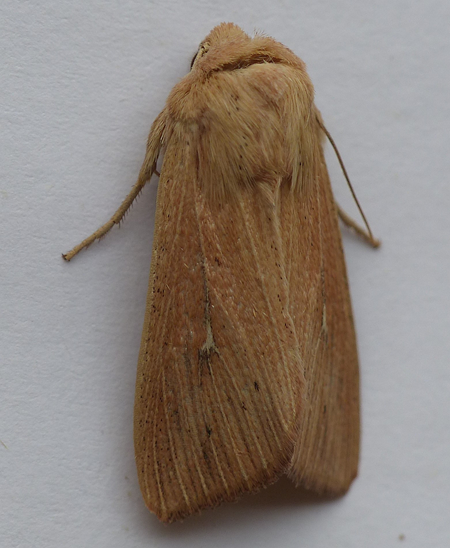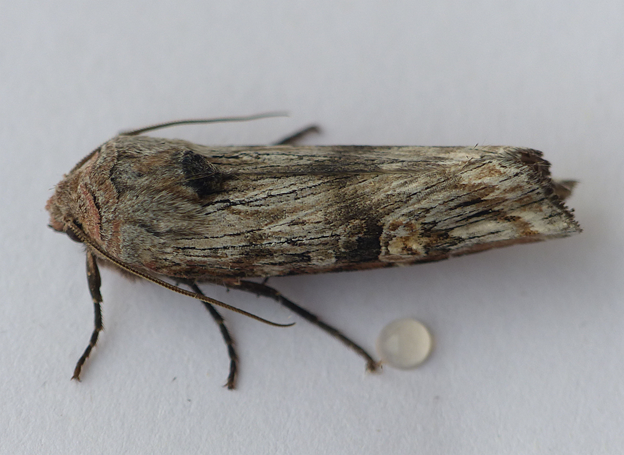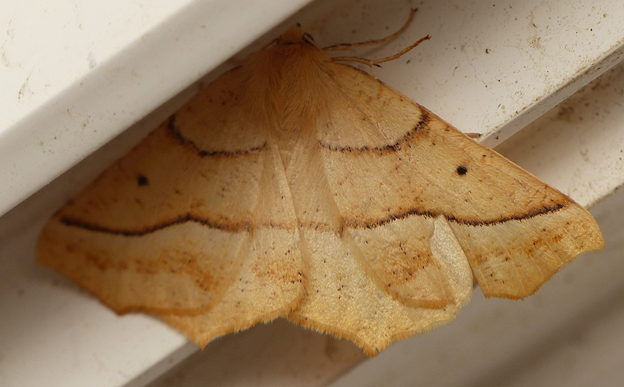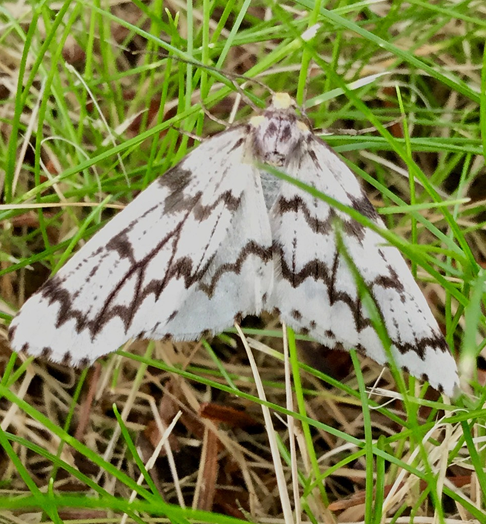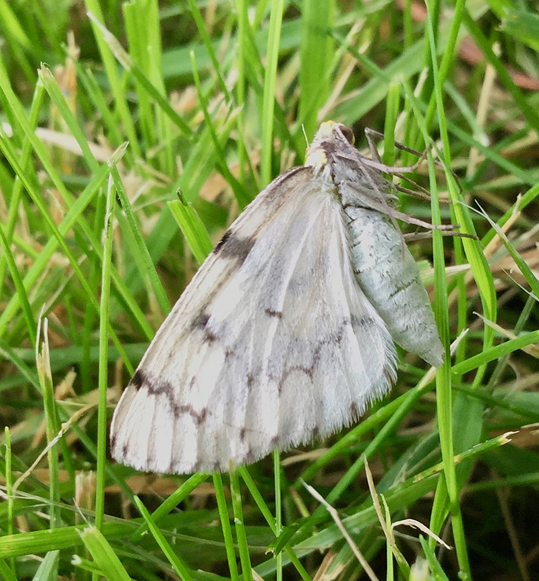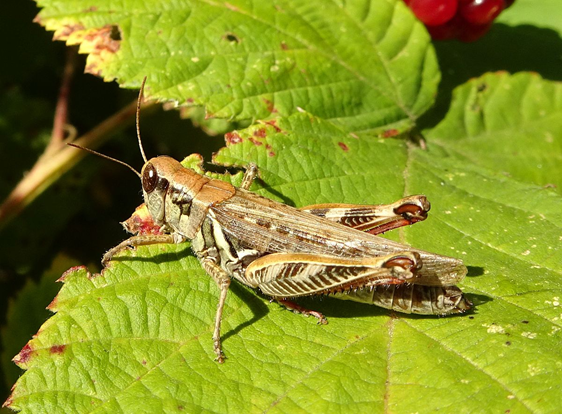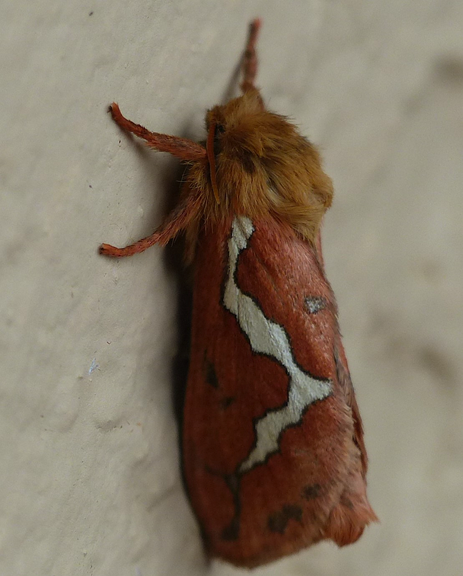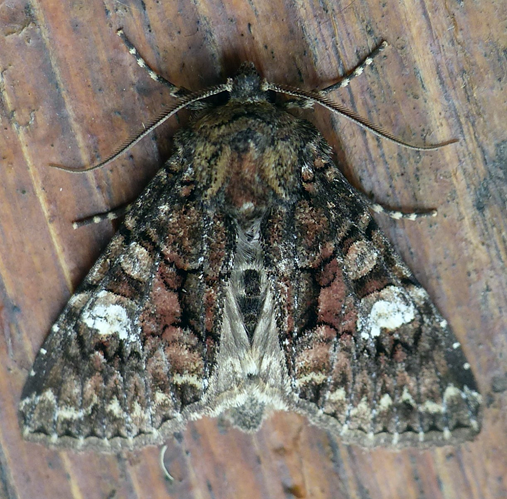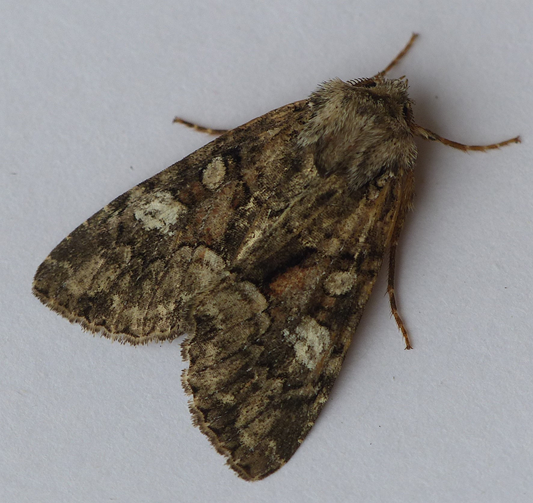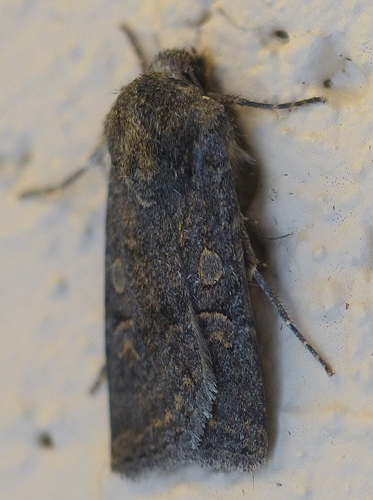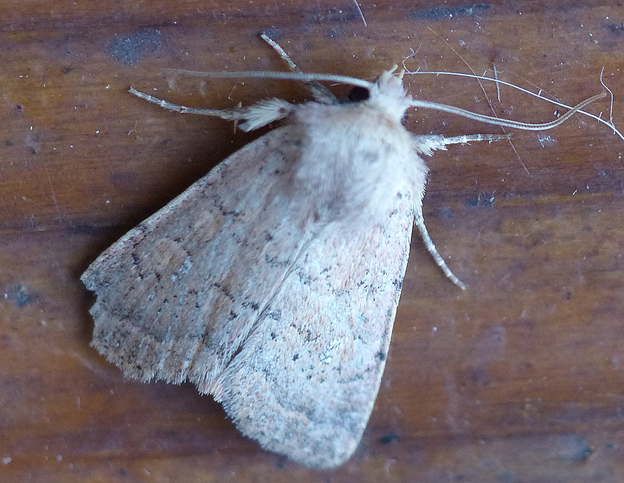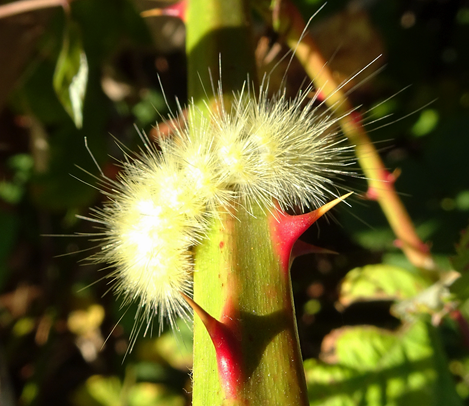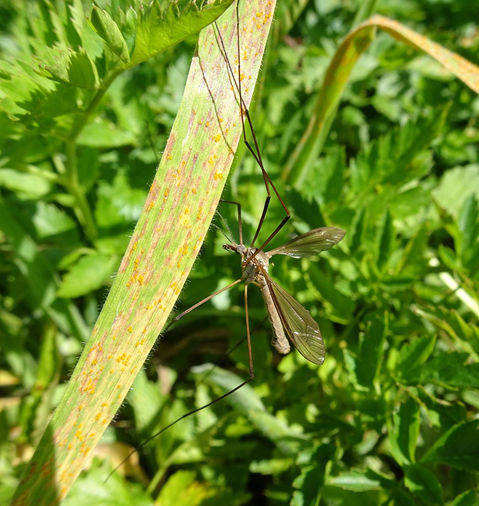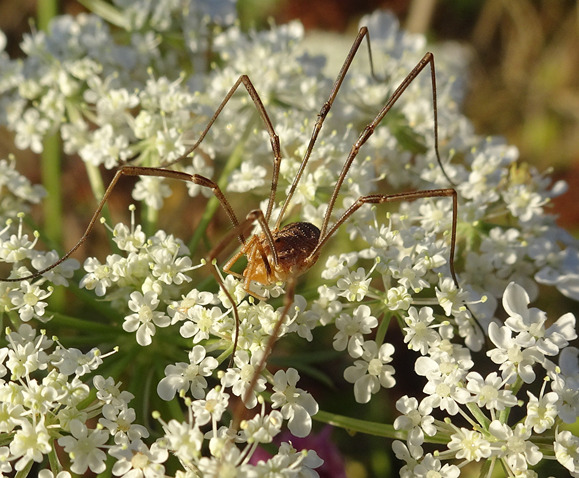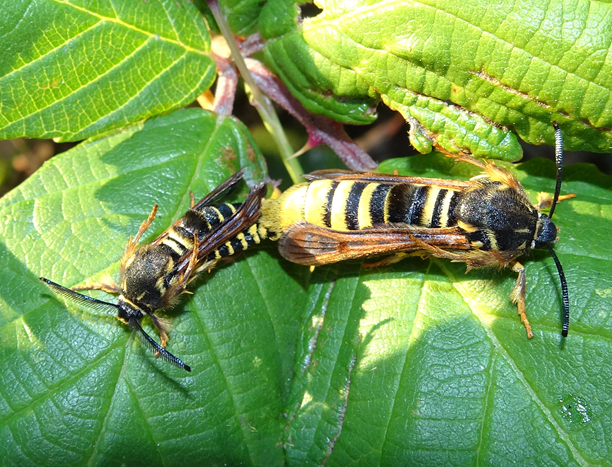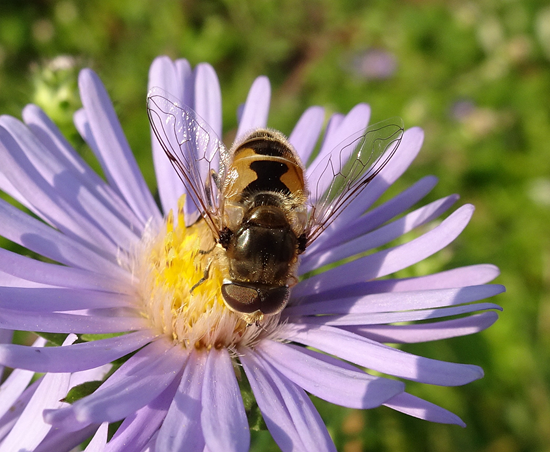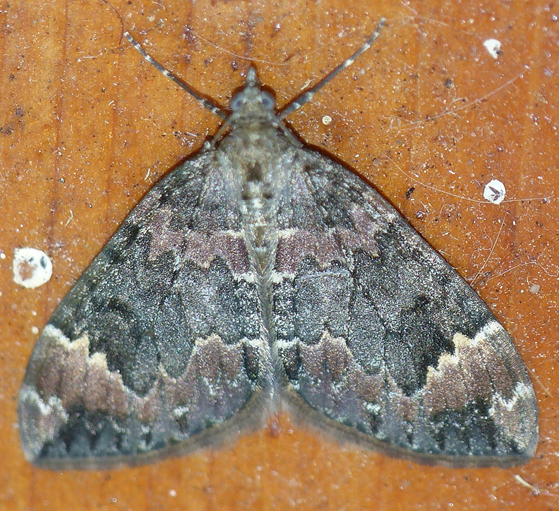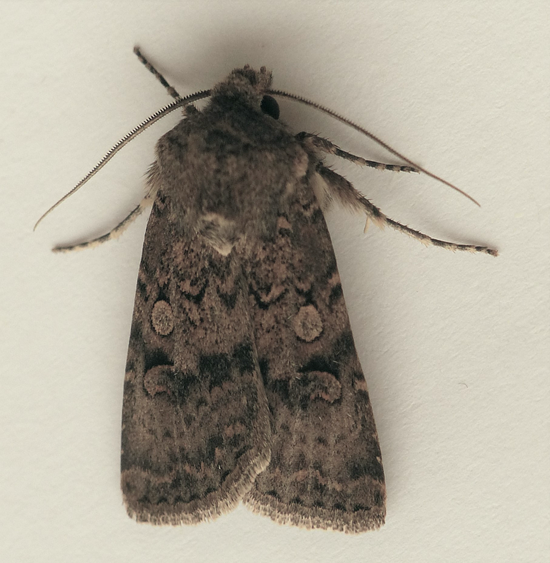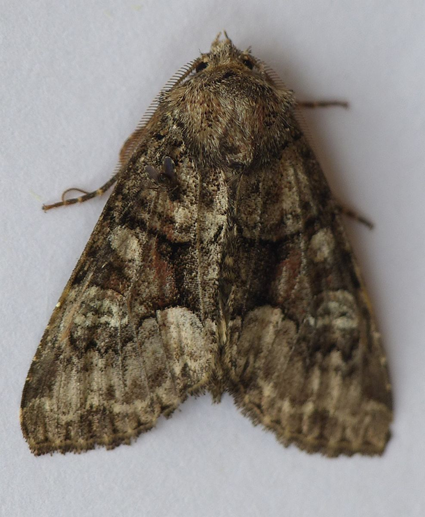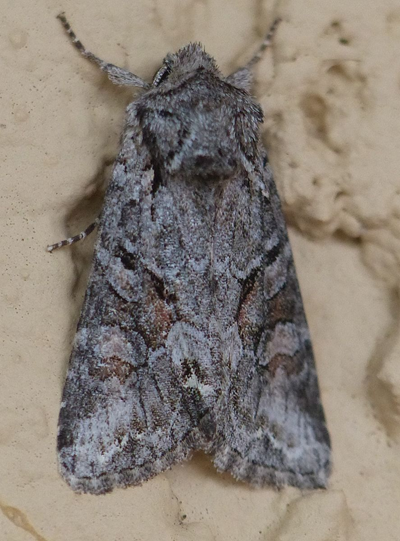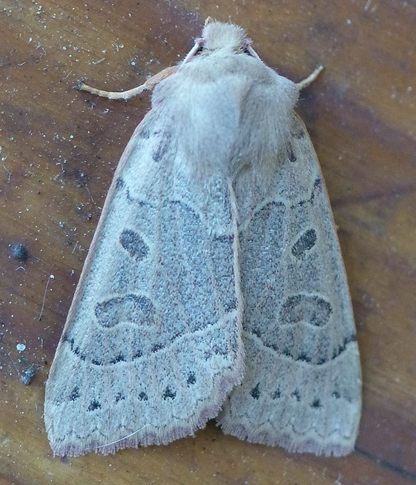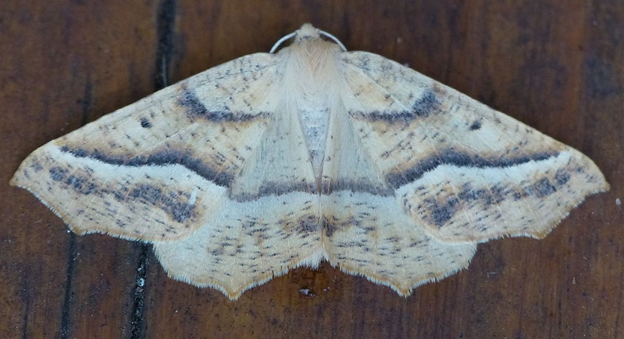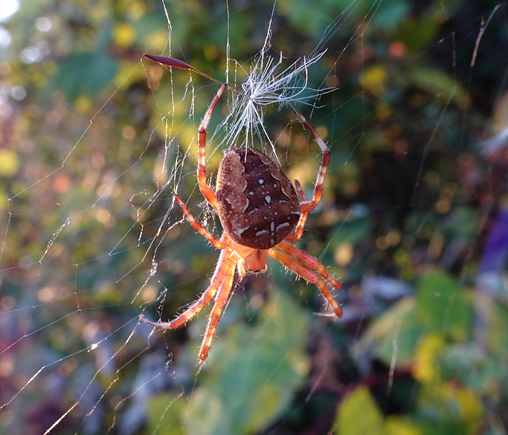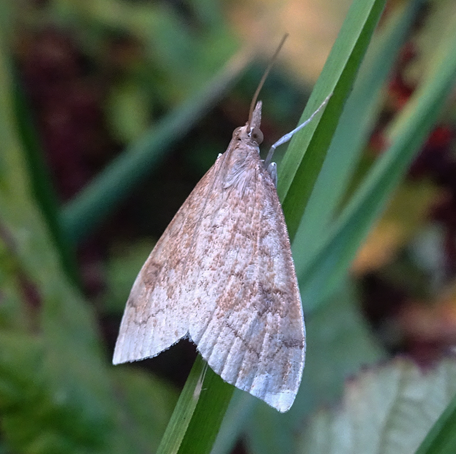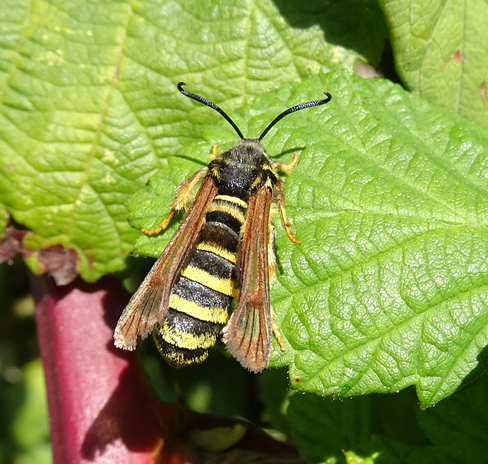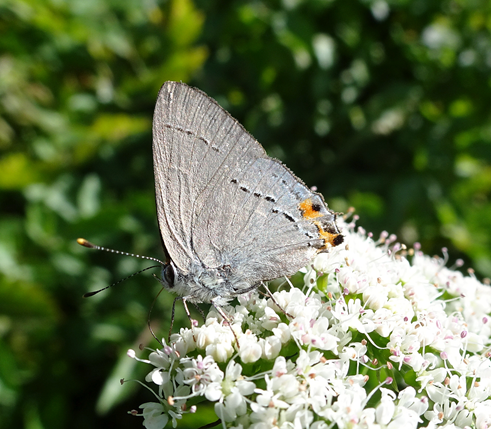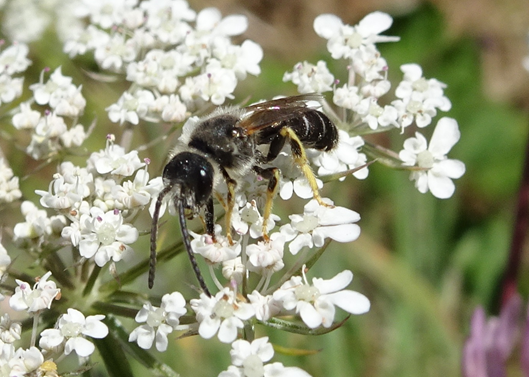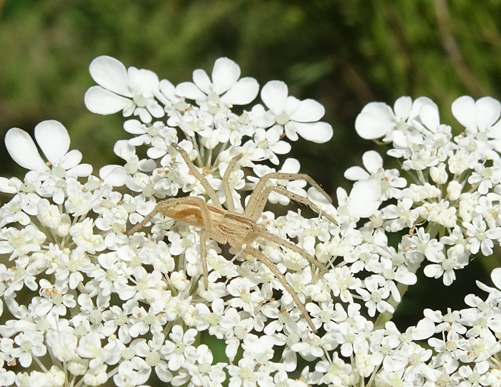2020 September 19 morning
Apologies for no Invert Alerts for two days. The problem was not no insects. Quite the opposite – too many for me to process – a nice problem to have!
Some photographs from Ian Cooper, between September 05 – 10, 2020, on the Galloping Goose Trail between Seaton Street and Tillicum Road. Dr Jeff Skevington tells us that both of the flies below are introduced species, Myathropa a recent arrival.

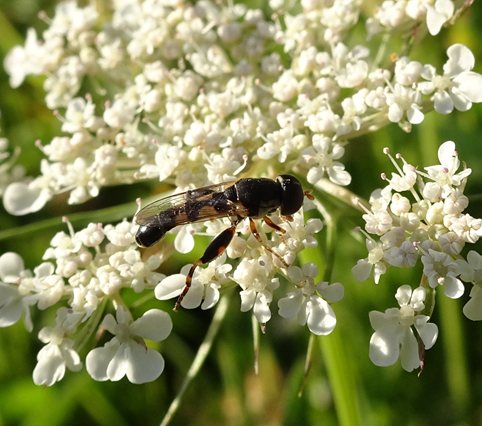
Syritta pipiens (Dip.: Syrphidae) Ian Cooper

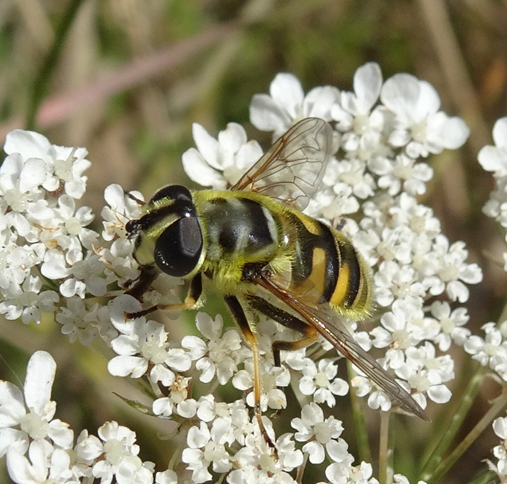
Myathropa florea (Dip.: Syrphidae) Ian Cooper

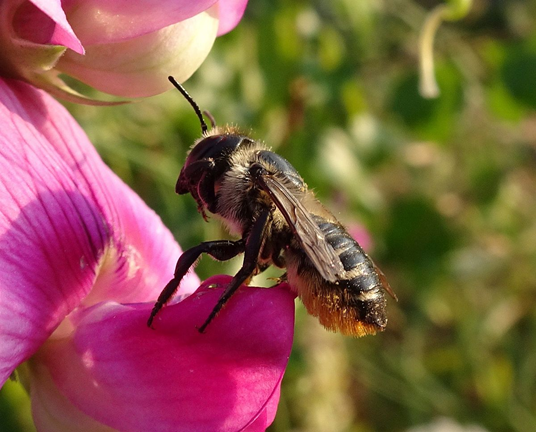
Megachile perihirta (Hym.: Megachilidae) Ian Cooper

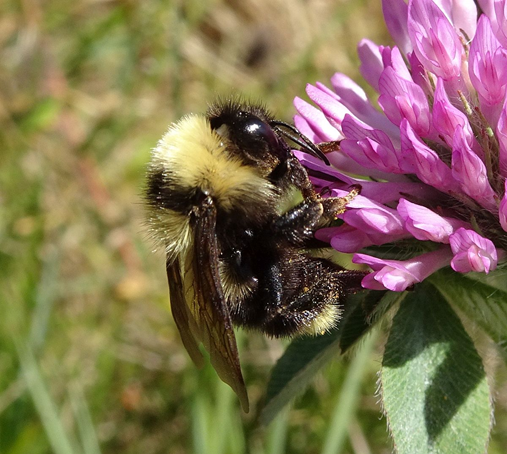
Bombus (possibly occidentalis)(Hym.: Apidae) Ian Cooper

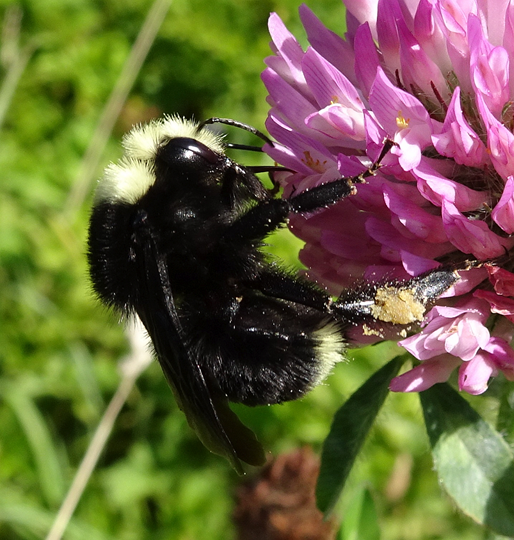
Bombus vosnesenskii (Hym.: Apidae) Ian Cooper

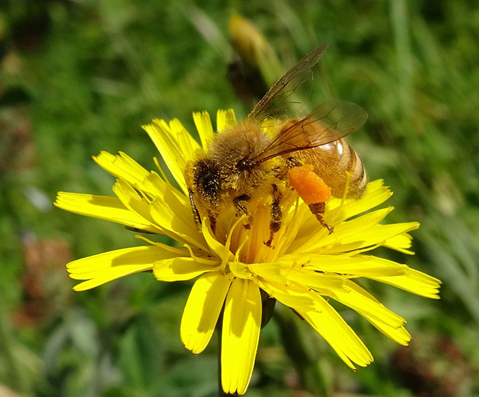
Honey Bee Apis mellifera (Hym.: Apidae) Ian Cooper

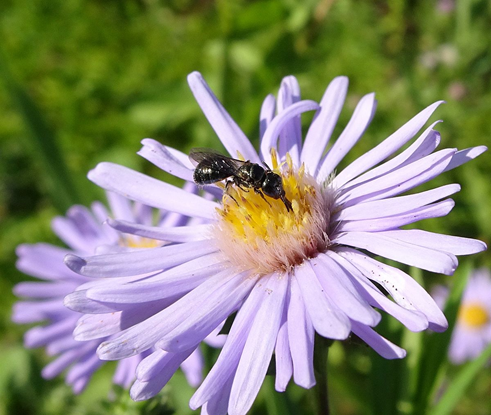
Probably Ceratina sp. (Hym.: Apidae) Ian Cooper
Jochen Möhr’s moths from Metchosin September 18 morning (no photographs):
1 Eupithecia sp
1 Dryotype opina
1 Ennomos magnaria
1 Feltia jaculifera
4 Neoalcis californiaria
2 Noctua pronuba
3 Plemyria georgii
3 Pleromelloida cinerea
2 Xestia finatimis /infimatis complex
Judy Spearing tells us that she and Parks Staff found five caterpillars of Anise Swallowtail on Water Parsley Oenanthe sarmentosa in Bow Park yesterday. Anise Swallowtails have been so scarce in recent years that it is great news to hear of caterpillars in such a suburban locality. Anise Swallowtail is partially double-brooded, so this will be a second brood of the year. It is not unusual to find caterpillars in September or even later, and there is a good supply of Water Parsley in Bow Park for them to feed on, so the caterpillars stand a good chance of survival. Viewers might like to keep a look out on Fennel – another favorite foodplant of this species.

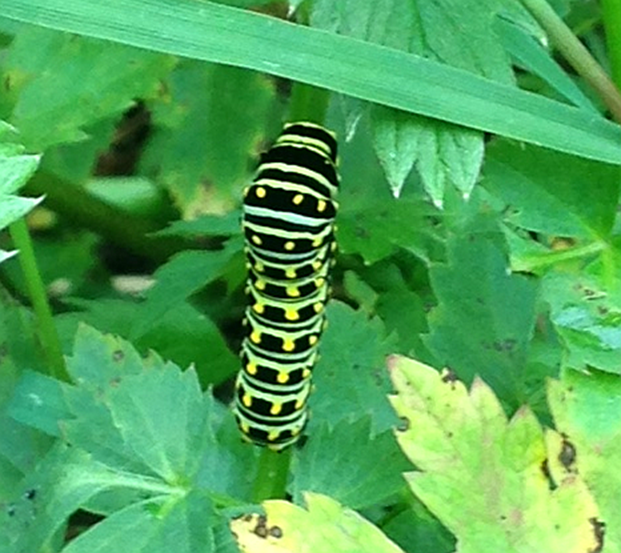
Anise Swallowtail Papilio zelicaon (Lep.: Papilionidae) Jill Tuson

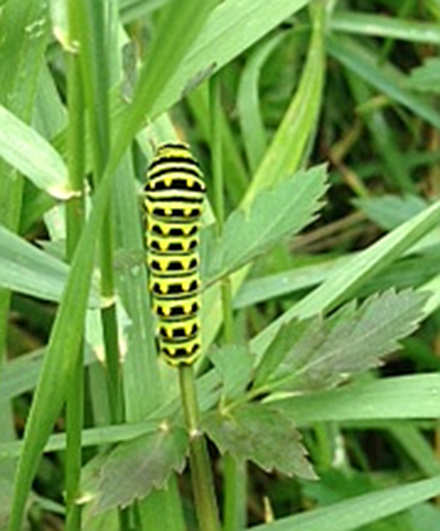
Anise Swallowtail Papilio zelicaon (Lep.: Papilionidae) Jill Tuson
Libby Avis writes: Went for a walk yesterday September 17th in a swampy area in the Alberni Valley. Found two caterpillars of Spiramater lutra on Bracken Pteridium aquilinum, about 100 yards apart. Both appeared to be feeding and were well camouflaged against the stem of the bracken.

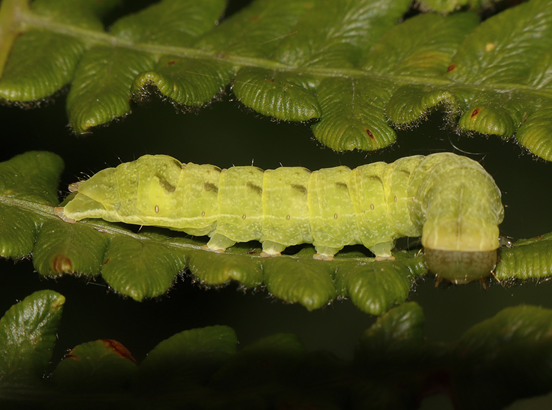
Spiramater lutra (Lep.: Noctuidae) Libby Avis
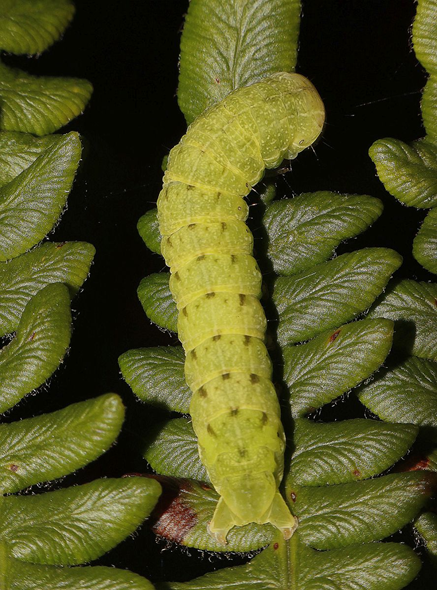
Spiramater lutra (Lep.: Noctuidae) Libby Avis

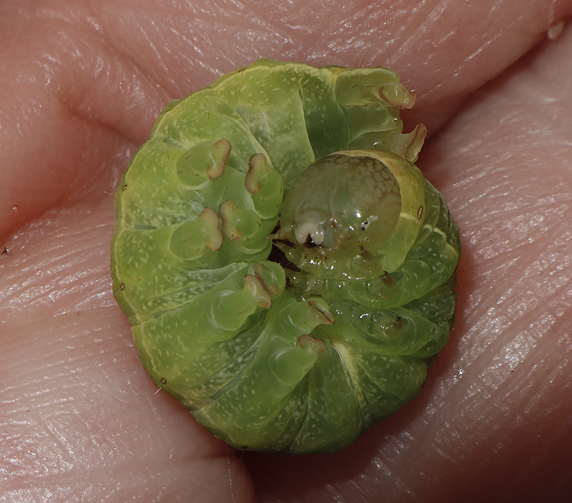
Spiramater lutra (Lep.: Noctuidae) Libby Avis

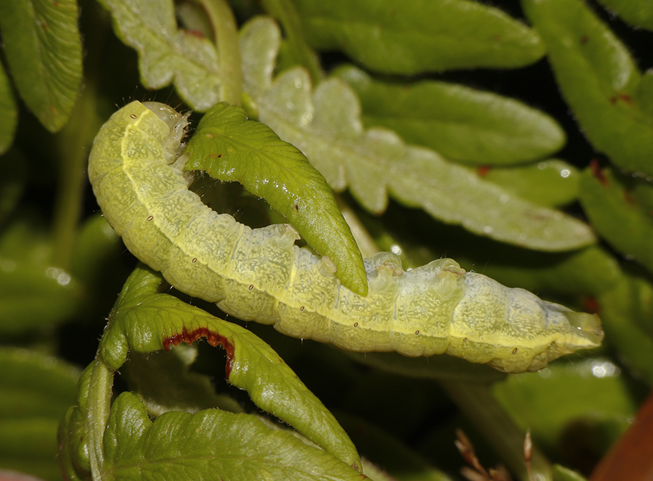
Spiramater lutra (Lep.: Noctuidae) Libby Avis

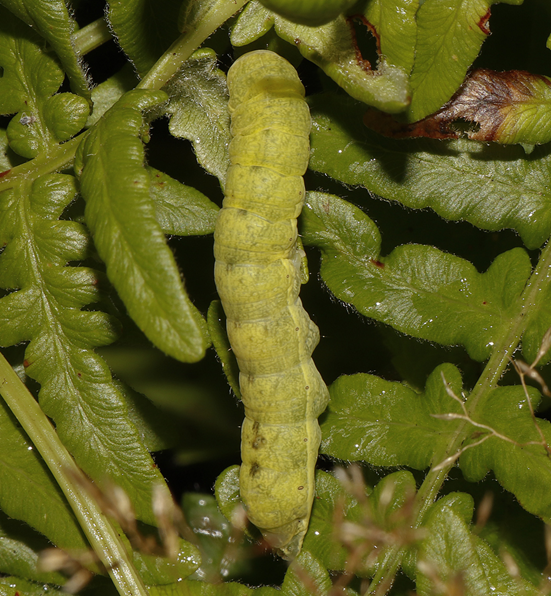
Spiramater lutra (Lep.: Noctuidae) Libby Avis
Jochen Möhr sends photographs of a Jumping Bristletail from Metchosin. This is a hexapod (but not, in today’s classification, an insect) in the Order Microcoryphia. In spite of the excellent quality of the photographs, I don’t know if we’ll be able to find anyone to identify it to species. I think the central caudal appendage is broken – it should be much longer.

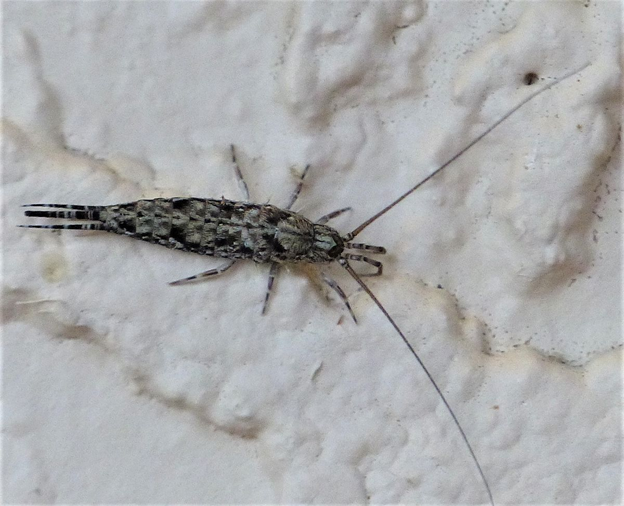
Jumping bristletail (Microcoryphia) Jochen Möhr

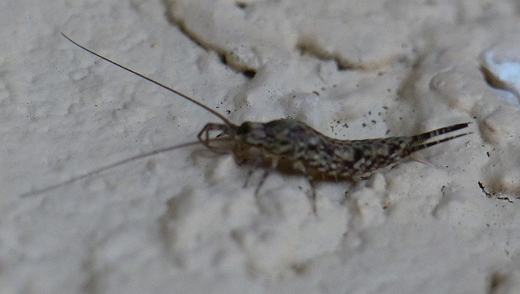
Jumping bristletail (Microcoryphia) Jochen Möhr
Jochen also sends a photograph of two crane flies, which I don’t think are the usual Tipula paludosa.

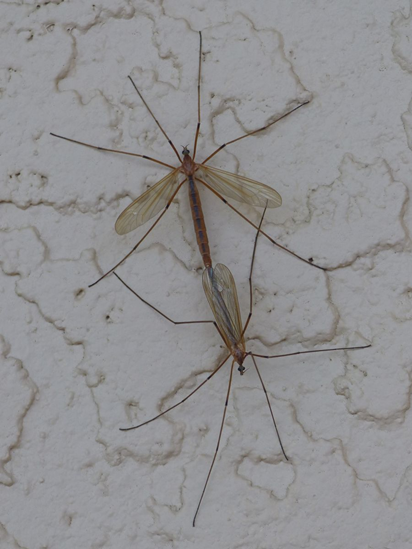
Crane flies (Dip.: Tipulidae) Jochen Möhr
Jochen’s moths from Metchosin September 19 morning:
1 Agriphila straminella
1 Emmelina monodactyla
5 Fishia illocata
1 Homorthodes furfurata
4 Neoalcis californiaria
1 Noctua pronuba
2 Pleromelloida cinerea
1 Xestia finatimis/ infimatis complex

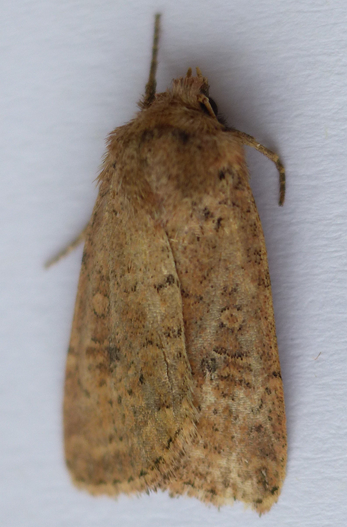
Homorthodes furfurata (Lep.: Noctuidae) Jochen Möhr

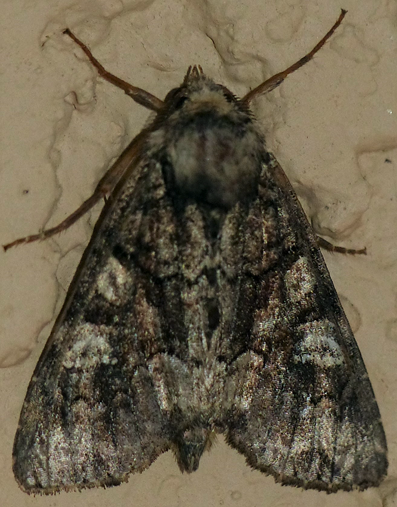
Fishea illocata (Lep.: Noctuidae) Jochen Möhr

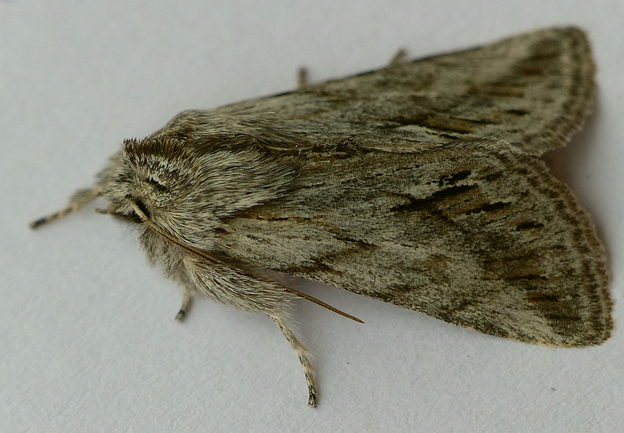
Pleromelloida cinerea (Lep.: Noctuidae) Jochen Möhr

